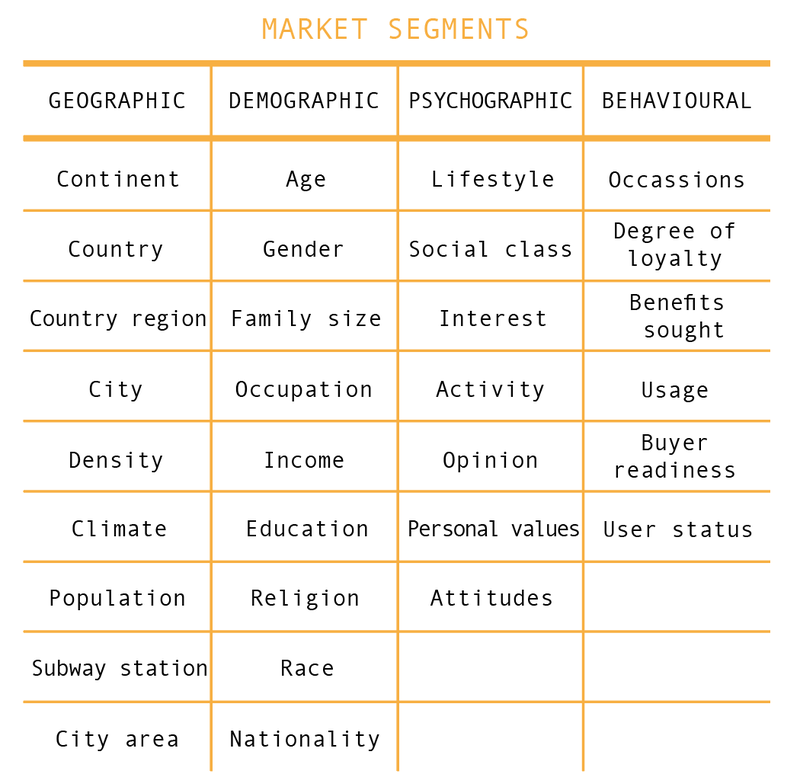Innovation, Design and Marketing Specifications
- Various specifications are used to determine the features of markets, users, innovations, etc.
Target Market
- Designers must consider the market when targeting their product, service or system.
- When determining the target market; market sectors and segments need to be identified.
- The smaller the sector, the more the target audience will have in common.
- Companies may decide to compete in the whole market or only in segments that are attractive and/or familiar.
Market Sector
- A broad way of categorizing the kinds of market the company is aiming for.
Market Segment
- Markets divide into smaller segments where the purchasers have similar characteristics and tastes.
- Market segments can be broken down into geographic, demographic, psychographic and behavioral segments.

Example
Bicycle manufacturers break their products down into specific target segments such as leisure, sports and competition.
Segmentation of these markets would focus on men, women and children within these fields.
Target Audience
- A specific group of people within the target market at which a product or the marketing message of a product is aimed at.
Example
An audience may be found within the male, competitive triathlon environment.
This particular audience has many requirements beyond the bicycle itself and extends into swimwear, watches, footwear etc.
Market Analysis
- Market analysis is an appraisal of economic viability of the proposed design from a market perspective, taking into account fixed and variable costs and pricing.
- It is typically a summary about potential users and the market.
User Need
- A user need is the essential requirements that a product must satisfy in relation to the user.
- It is most closely related to the "compatibility" aspect of Roger's diffusion model.
Competition
- Any company or product that can fulfil similar functions for a similar market.
- It is very important that both the function and market are similar.
- Competition research and analysis is aimed at identifying competitors by market segment, target market and target audience.
- To understand the competitor’s position in the market and the potential for the entry of a competitive player, the following questions need to be answered:
What is the size of the market?
Is entry to the market time dependent?
What is the current level of market diffusion?
Are there barriers to market entry; legislation, high investment costs, technology?
What are the strengths and weaknesses of the new product and existing market solutions?
Research Methods
- A thorough analysis of competing designs is required to establish the market need.
- Methods include user research, user trial, literature search, expert appraisal, performance test.
Design Specification
- A list of requirements, constraints and considerations that a yet-to-be-designed product must fulfil.
- The ability to transform their research findings into a series of specifications is a skill that designers must develop to become successful.
- Being able to express parameters and requirements briefly and clearly allows the designer to develop focused solutions to the design problem and meet a client or the target market’s wants and needs.
- Designers must establish clear parameters for a marketing specification in order to create unique and creative solutions to a problem.
- Designers need to collect valid and useful data from the target market and audience throughout the design cycle to ensure the specification includes certain essential components.